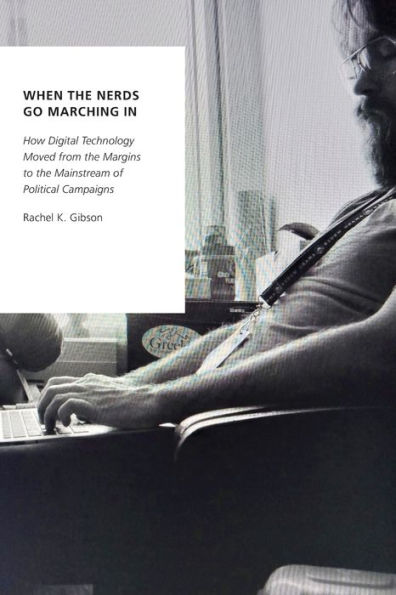Home
When the Nerds Go Marching In: How Digital Technology Moved from Margins to Mainstream of Political Campaigns
Loading Inventory...
Barnes and Noble
When the Nerds Go Marching In: How Digital Technology Moved from Margins to Mainstream of Political Campaigns
Current price: $37.99


Barnes and Noble
When the Nerds Go Marching In: How Digital Technology Moved from Margins to Mainstream of Political Campaigns
Current price: $37.99
Loading Inventory...
Size: Paperback
*Product Information may vary - to confirm product availability, pricing, and additional information please contact Barnes and Noble
This is an open access title available under the terms of a CC BY-NC-ND 4.0 International license. It is free to read at Oxford Scholarship Online and offered as a free PDF download from OUP and selected open access locations.
Digital technology has moved from the margins to the mainstream of campaign and election organization in contemporary democracies. Previously considered a mere novelty item, technology has become a basic necessity for any candidate or party contemplating a run for political office. While it is difficult to pinpoint exactly when the first digital campaign was officially launched, the general consensus is that the breakthrough moment, at least in terms of public awareness, came during the 1992 U.S. election cycle. At the presidential level, it was Democratic nominee Bill Clinton who laid claim to this virtual terra nova after his staff uploaded a series of basic text files with biographical information for voters to browse. Since that time, use of the internet in elections has expanded dramatically in the U.S. and elsewhere.
When the Nerds Go Marching In
examines the increasing role and centrality of the internet within election campaigns across established democracies since the 1990s. Combining an extensive review of existing literature and comparative data sources with original survey evidence and web content analysis of digital campaign content across four nationsthe UK, Australia, France, and the U.S.the book maps the key shifts in the role and centrality of the internet in election campaigns over a twenty year period.
Specifically, Gibson sets out the case for four phases of development in digital campaigns, from early amateur experimentation and standardization, to more strategic mobilization of activists and voters. In addition to charting the way these developments changed external interactions with citizens, Gibson details how this evolution is transforming the internal structure of political campaigns. Despite some early signs that the internet would lead to the devolution of power to members and supporters, more recent developments have seen the emergence of a new digitally literate cohort of data analysts and software engineers in campaign organizations. This group exercises increasing influence over key decision-making tasks. Given the resource implications of this new "data-driven" mode of digital campaigning, the book asserts that smaller political players face an even greater challenge to compete with their bigger rivals. Based on her findings, Gibson also speculates on the future direction for political campaigns as they increasingly rely on digital tools and artificial intelligence for direction and decision-making during elections.
Digital technology has moved from the margins to the mainstream of campaign and election organization in contemporary democracies. Previously considered a mere novelty item, technology has become a basic necessity for any candidate or party contemplating a run for political office. While it is difficult to pinpoint exactly when the first digital campaign was officially launched, the general consensus is that the breakthrough moment, at least in terms of public awareness, came during the 1992 U.S. election cycle. At the presidential level, it was Democratic nominee Bill Clinton who laid claim to this virtual terra nova after his staff uploaded a series of basic text files with biographical information for voters to browse. Since that time, use of the internet in elections has expanded dramatically in the U.S. and elsewhere.
When the Nerds Go Marching In
examines the increasing role and centrality of the internet within election campaigns across established democracies since the 1990s. Combining an extensive review of existing literature and comparative data sources with original survey evidence and web content analysis of digital campaign content across four nationsthe UK, Australia, France, and the U.S.the book maps the key shifts in the role and centrality of the internet in election campaigns over a twenty year period.
Specifically, Gibson sets out the case for four phases of development in digital campaigns, from early amateur experimentation and standardization, to more strategic mobilization of activists and voters. In addition to charting the way these developments changed external interactions with citizens, Gibson details how this evolution is transforming the internal structure of political campaigns. Despite some early signs that the internet would lead to the devolution of power to members and supporters, more recent developments have seen the emergence of a new digitally literate cohort of data analysts and software engineers in campaign organizations. This group exercises increasing influence over key decision-making tasks. Given the resource implications of this new "data-driven" mode of digital campaigning, the book asserts that smaller political players face an even greater challenge to compete with their bigger rivals. Based on her findings, Gibson also speculates on the future direction for political campaigns as they increasingly rely on digital tools and artificial intelligence for direction and decision-making during elections.









